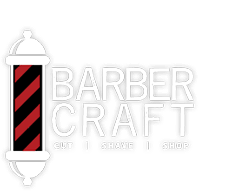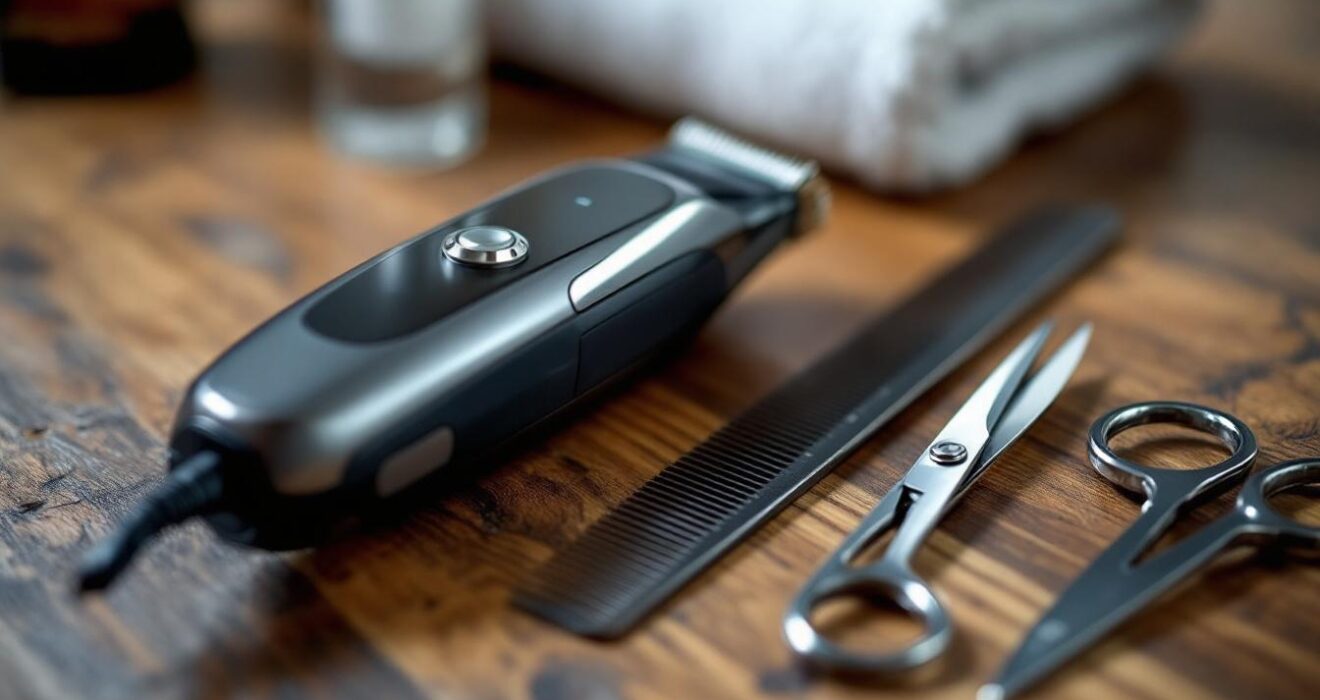Thin Beard Trim: Styling Tips for Sparse Facial Hair
Dealing with a thin beard can be frustrating, but it doesn’t mean you can’t rock a stylish look. At Barber Craft, we’ve helped countless men transform their sparse facial hair into well-groomed, confidence-boosting beards.
In this guide, we’ll share our top thin beard trim techniques and styling tips to make the most of your facial hair. Get ready to embrace your unique look and turn heads with your perfectly styled thin beard.
Why Is My Beard Thin?
Genetic Factors
Thin beards are more common than you might think. Genetic factors play a significant role in beard thickness. The present understanding of genetics related to scalp and facial hair characteristics aims to develop a more inclusive approach. Hormones, particularly testosterone and dihydrotestosterone levels, also influence beard density.
Age and Beard Development
Many men don’t achieve a fuller beard until their late twenties or early thirties. If you’re younger, your beard may still be developing. The American Academy of Dermatology notes that beard thickness can change throughout a man’s life due to hormonal fluctuations.
Health and Lifestyle Impact
Your overall health and lifestyle choices impact beard growth. A balanced diet rich in vitamins A, B12, C, D, and zinc can promote healthier facial hair. Regular exercise improves blood flow, which helps to stimulate hair follicle growth. Exercises like weightlifting and strength training may also be beneficial. Stress and lack of sleep can hinder growth, so it’s important to manage these factors.
Common Grooming Challenges
Thin beards present unique grooming challenges. Patchiness and uneven growth are common issues (affecting up to 55% of men worldwide, according to Modern Gentlemen). Many men struggle to achieve a full, dense look. Proper trimming techniques can create the illusion of fullness. Regular maintenance is essential to keep thin beards looking their best.
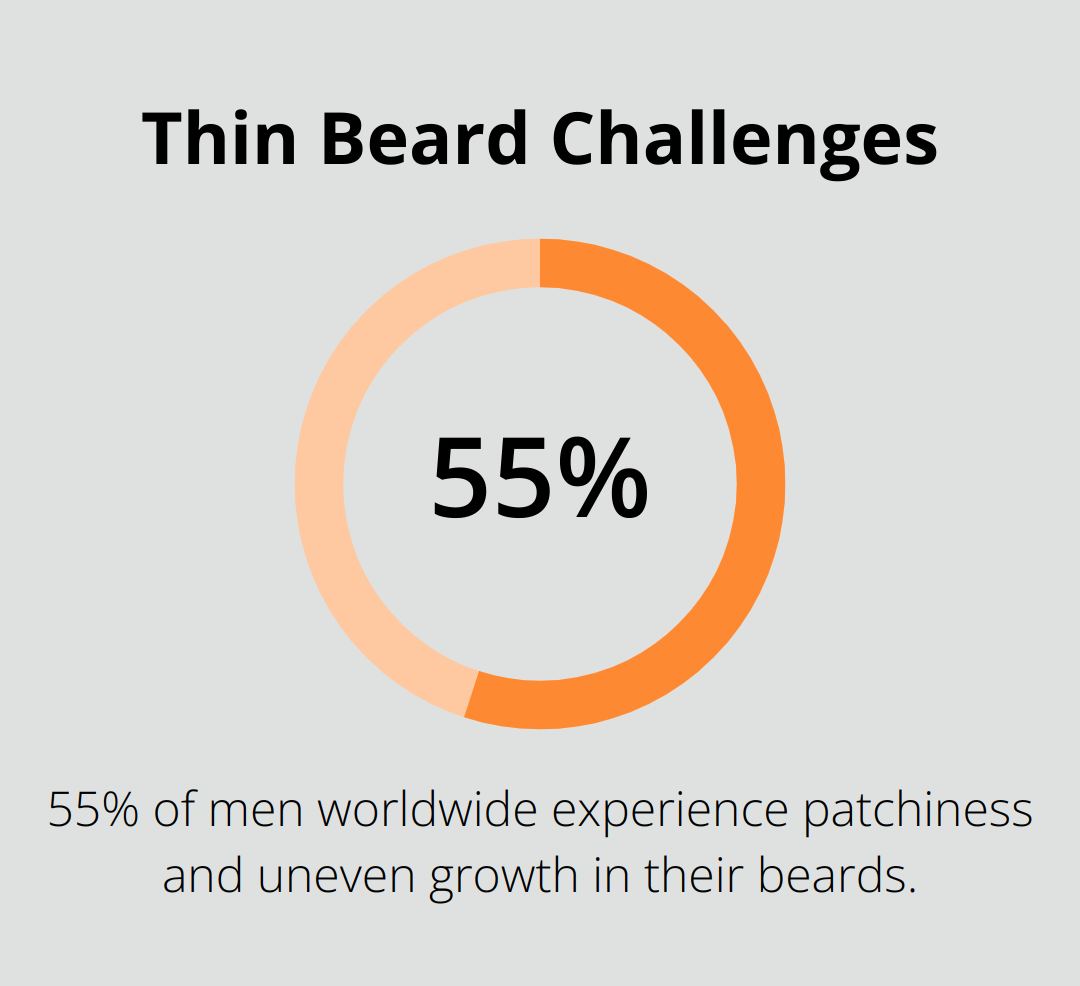
Embracing Your Unique Beard
It’s important to understand that beard thickness varies greatly among men. Some men naturally have thinner facial hair, and that’s perfectly normal. Embracing your unique beard type is the first step to confident grooming.
Now that we’ve explored the factors behind thin beards, let’s move on to specific grooming techniques that can enhance your facial hair, regardless of its thickness.
How to Groom a Thin Beard
Grooming a thin beard requires specific techniques to enhance its appearance and create the illusion of fullness. Here’s how you can achieve a well-groomed thin beard:
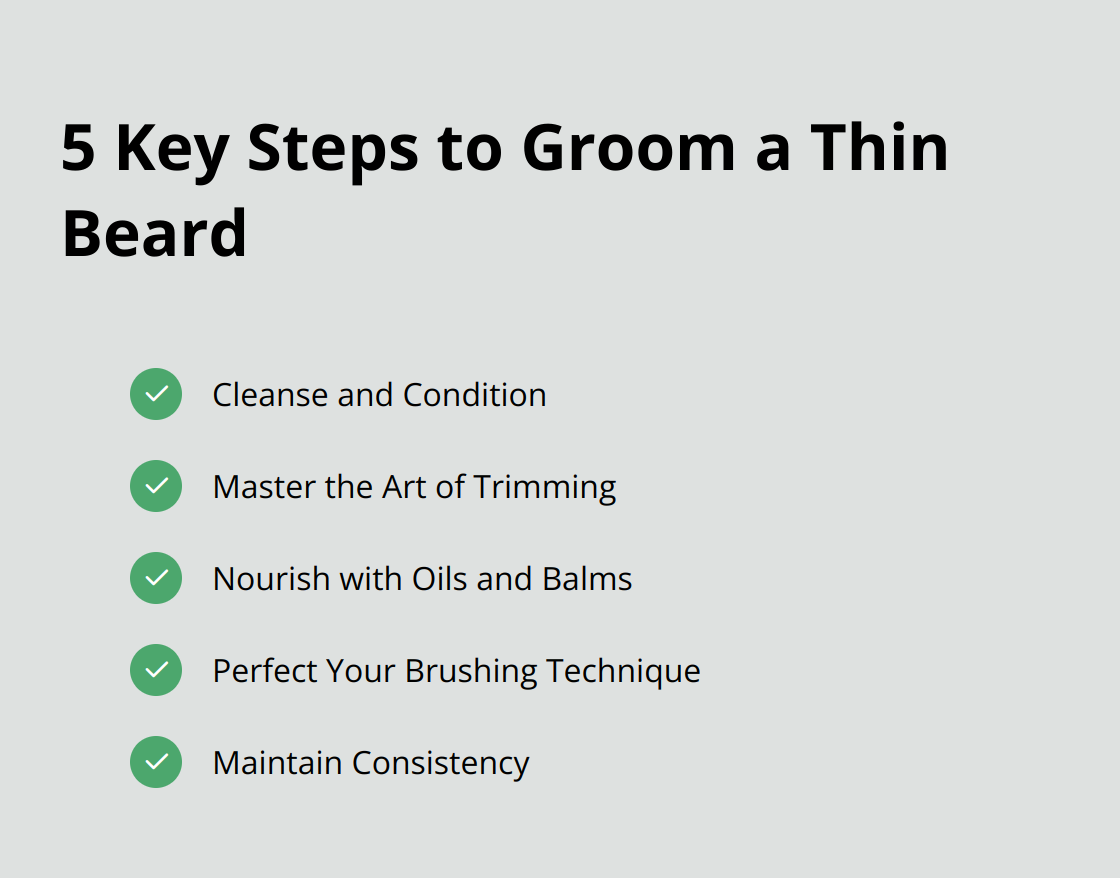
Cleanse and Condition
Start with a clean slate. Wash your beard using a mild, sulfate-free beard shampoo. This prevents over-drying, which can make thin beards look even sparser. Follow up with a lightweight conditioner to soften the hair and make it more manageable. Pat dry gently with a microfiber towel to avoid frizz.
Master the Art of Trimming
Trimming is essential for thin beards. Use a high-quality trimmer with multiple length settings. Start with a longer setting and gradually decrease until you find the ideal length. This method prevents over-trimming, which can expose patchy areas. Focus on creating clean lines along the cheeks and neck to define your beard shape. If you’re new to facial hair, leave at least 2-3 weeks before trimming, and then focus on defining your cheek and neckline only.
Nourish with Oils and Balms
Beard oils and balms transform thin beards. They moisturize the hair and skin, reducing itchiness and flakiness. Apply 3-4 drops of beard oil to damp facial hair, massaging it into the skin. This stimulates blood flow and can potentially encourage fuller growth. For added hold and shine, use a small amount of beard balm. These products also help to tame flyaways, creating a more uniform look.
Perfect Your Brushing Technique
Invest in a boar bristle brush and a fine-toothed comb. Brush your beard daily to distribute natural oils and exfoliate the skin beneath. This promotes healthier growth and helps train your beard to grow in a desired direction. When combing, start from the bottom and work your way up to detangle gently without pulling out precious hairs.
Maintain Consistency
Consistency is key to seeing improvements in the overall health and appearance of your facial hair. Stick to your routine (even on lazy days), and you’ll notice positive changes over time. Many men struggle with thin beards, but proper grooming can make a significant difference.
Now that you’ve mastered the basics of thin beard grooming, let’s explore specific styling tips to further enhance your facial hair in the next section.
How to Style a Thin Beard
Styling a thin beard requires a strategic approach to create the illusion of fullness and density. Here’s how you can make the most of your thin beard:
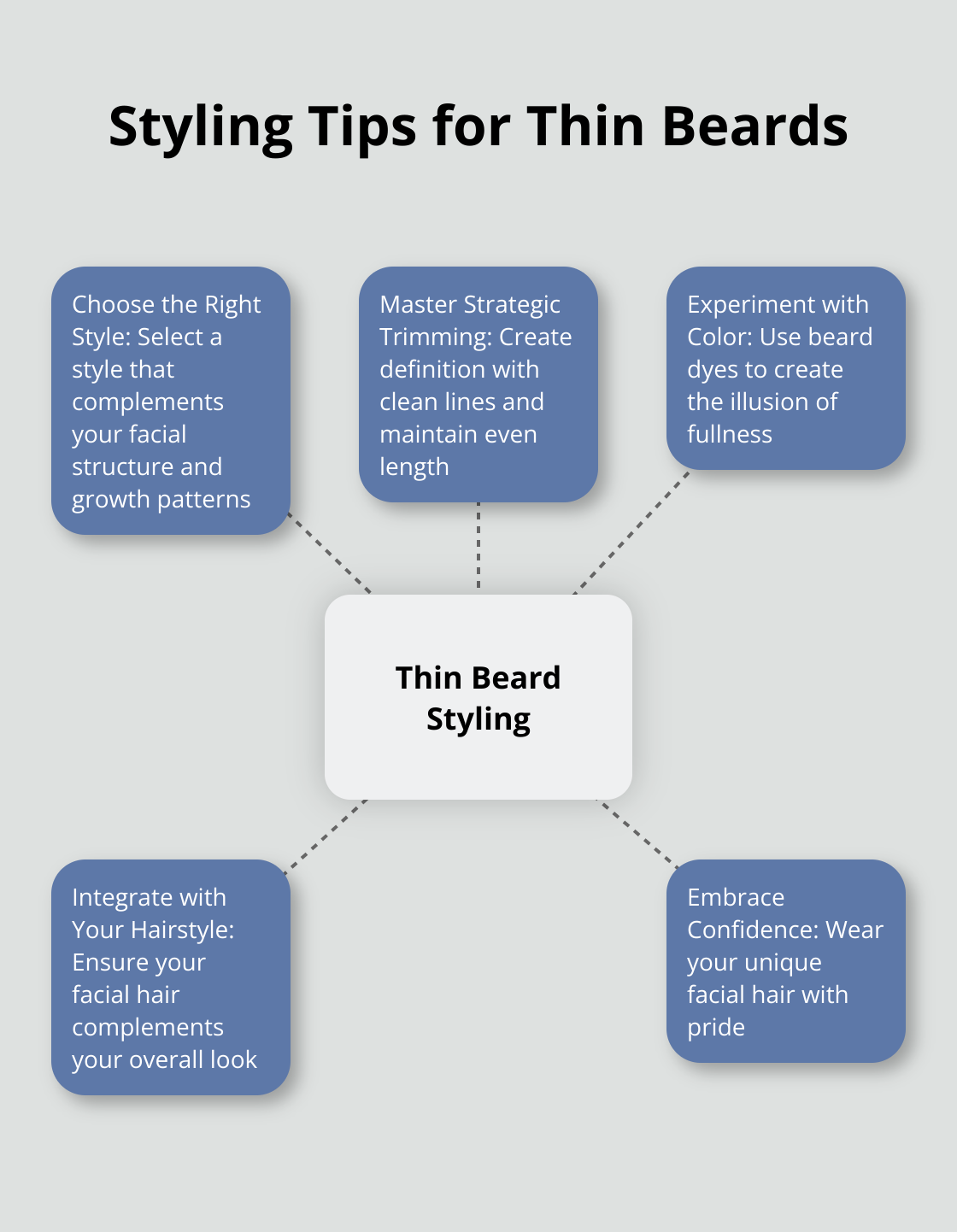
Choose the Right Style
The key to a great-looking thin beard is to select a style that complements your facial structure and hair growth patterns. Shorter styles often work best for sparse facial hair. Goatees, chin straps, and mustaches are classic ways to maneuver around a thin beard to still look your best. These styles focus attention on areas with denser growth, creating a more polished look.
Master Strategic Trimming
Creating definition is important for thin beards. Use a precision trimmer to create clean, sharp lines along your cheeks and neckline. This contrast between bare skin and facial hair can make your beard appear fuller. When trimming, focus on maintaining an even length throughout. Avoid over-trimming, as this can expose patchy areas. Instead, use a slightly longer guard setting on your trimmer to maintain some length, which helps create the appearance of density.
Experiment with Color
Beard dyes can be a game-changer for men with thin or patchy facial hair. Darker shades can create the illusion of fullness by adding depth and dimension. When choosing a dye, opt for a shade that closely matches your natural hair color or go slightly darker. Apply the dye carefully, following the product instructions. For a more natural look, try using a semi-permanent dye that gradually fades over time. This allows for easier maintenance and less noticeable regrowth.
Integrate with Your Hairstyle
Your facial hair should complement your overall hairstyle. If you have a thin beard, consider a hairstyle that balances it out. Shorter haircuts on the sides can make your facial hair appear more prominent. For those with patchy cheeks, a longer hairstyle that covers the sideburns can create a seamless transition from hair to beard. Don’t hesitate to consult with your barber about the best way to integrate your facial hair with your hairstyle for a cohesive look.
Embrace Confidence
Confidence is key when sporting any beard style. Wear your unique facial hair with pride. With these styling tips and regular maintenance, you can transform your thin beard into a standout feature of your personal style.
Final Thoughts
Mastering a thin beard trim combines grooming techniques, styling finesse, and self-confidence. You can transform your sparse facial hair into a standout feature by understanding its unique characteristics and implementing effective strategies. Regular maintenance, proper cleansing, and nourishment with quality products will improve your beard’s appearance over time.
Experiment with different styles that complement your face shape and hair distribution. A well-defined goatee, sleek chin strap, or neatly trimmed stubble might suit you perfectly. Don’t hesitate to seek professional help for personalized grooming solutions. At Barber Craft, our experienced barbers specialize in crafting the perfect style for all beard types.
Wear your thin beard with pride, knowing you’ve put effort into its care and presentation. As you refine your grooming routine and explore different techniques, you’ll discover what works best for you. A well-groomed thin beard can be just as striking and stylish as a full one (it’s all about how you carry it).
